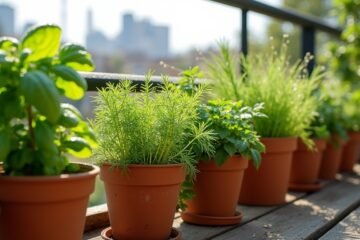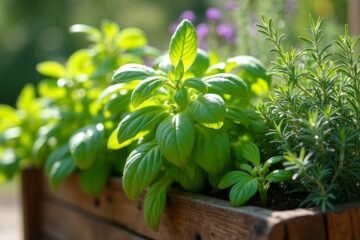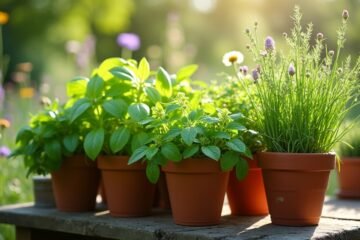If you’ve got a shady spot to fill, you’re in luck! Chives add a mild onion zing to your salads, while mint brings an invigorating aroma that dances through the air. Parsley pops with vibrant green hues, and cilantro offers that fresh, zesty kick you’ve been craving. Don’t forget thyme, the secret superstar that brings deep flavors to your dishes! Each of these herbs thrives in shade, so let’s explore how to grow them beautifully!
Chives
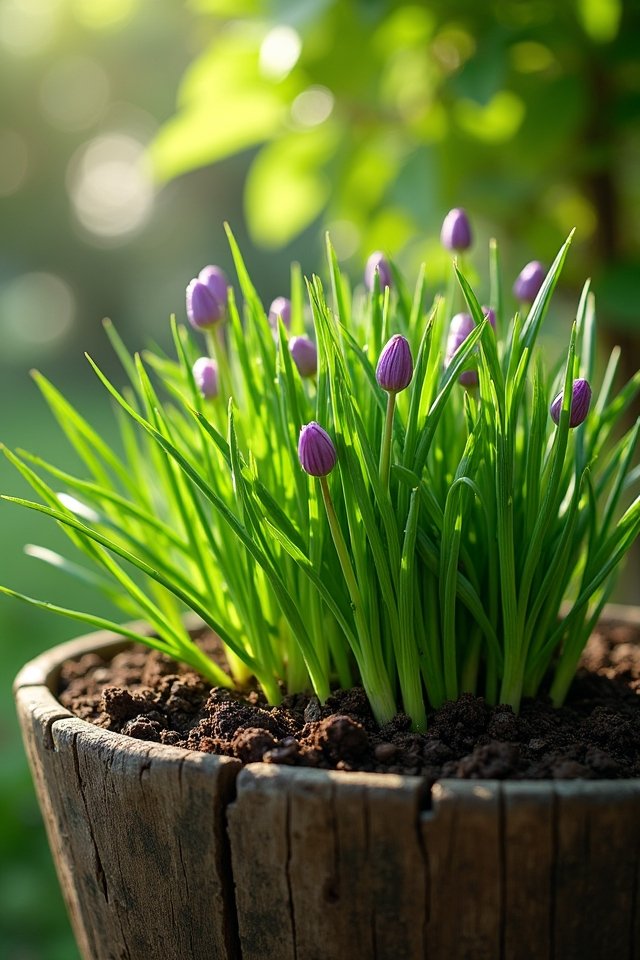
Chives are like the little green fairy of your shady container garden, sprinkling a delightful burst of flavor over your meals! With a mild onion taste, they enhance dishes from salads to soups, making every bite tantalizing. The chives benefits go beyond flavor; they’re packed with vitamins A and C, promoting better health while you’re at it. To enjoy their full potential, you’ll need to master chives care. Place them in a partially shady spot, where they’ll thrive without wilting under direct sunlight. Water them regularly, but don’t drown them! Snip the vibrant green tops regularly to encourage growth—it’s like giving your little fairy a haircut. So, ready to let the magic of chives transform your culinary creations?
Mint
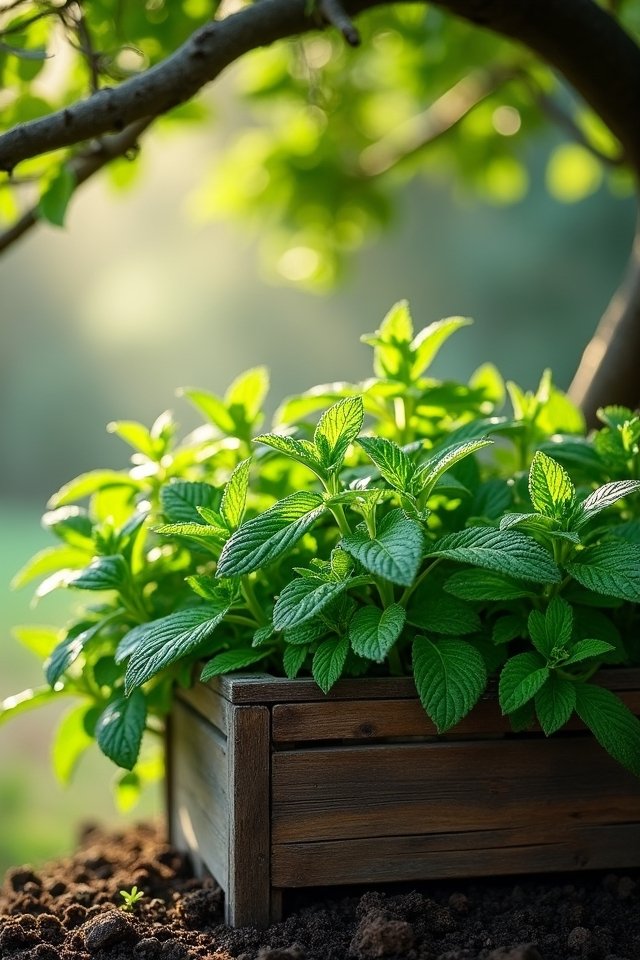
If you thought chives were a delightful addition to your shady container garden, wait until you experience the revitalizing charm of mint! This herb is like a burst of fresh air, invigorating your senses with its vibrant aroma. With mint varieties like spearmint and peppermint, you can add unique flavors to everything from cocktails to desserts!
Mint care is a breeze; just keep the soil moist and provide some indirect sunlight. Regular pruning encourages bushy growth, so don’t be shy—clip away! Imagine stepping outside to a revitalizing mint tea, all from your own shady garden. How cool is that? Whether you’re infusing water or adding it to salads, mint transforms your culinary creations into delightful experiences. Why not give it a try?
Parsley
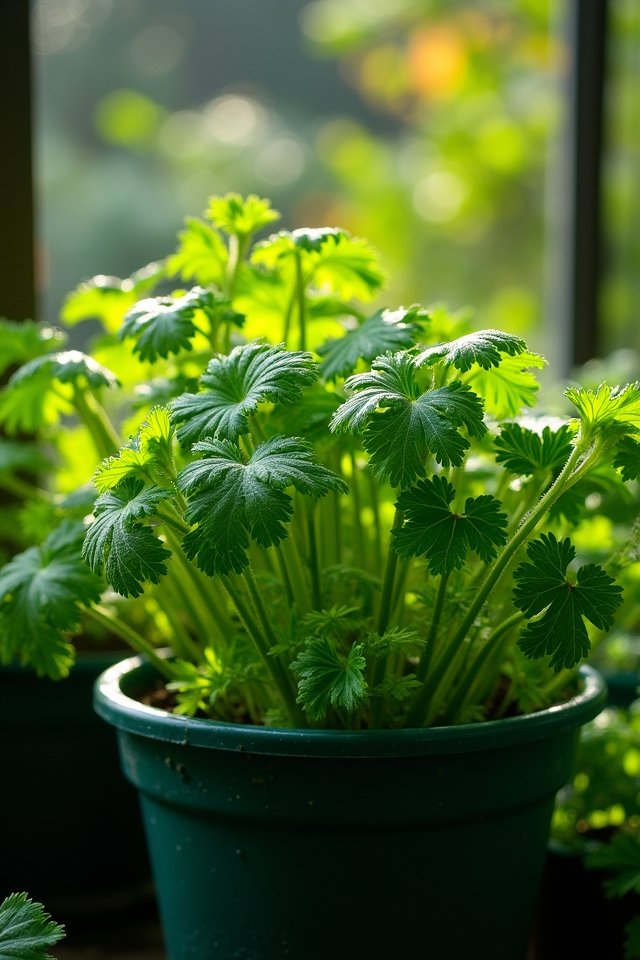
Parsley is one of those herbs that can turn an ordinary dish into something extraordinary! Its vibrant green leaves add a splash of freshness and flavor that dazzles the taste buds. When it comes to growing conditions, parsley thrives in partial shade, making it perfect for your cozy container garden. Just think, you can whisk up a delicious tabbouleh or garnish your favorite soup with homegrown parsley!
In culinary uses, it’s incredibly versatile. Sprinkle it on roasted vegetables or blend it into chimichurri for a zesty punch! And trust me, once you start using fresh parsley, you’ll wonder how you ever lived without it. So get ready to elevate your cooking game, one parsley leaf at a time!
Cilantro
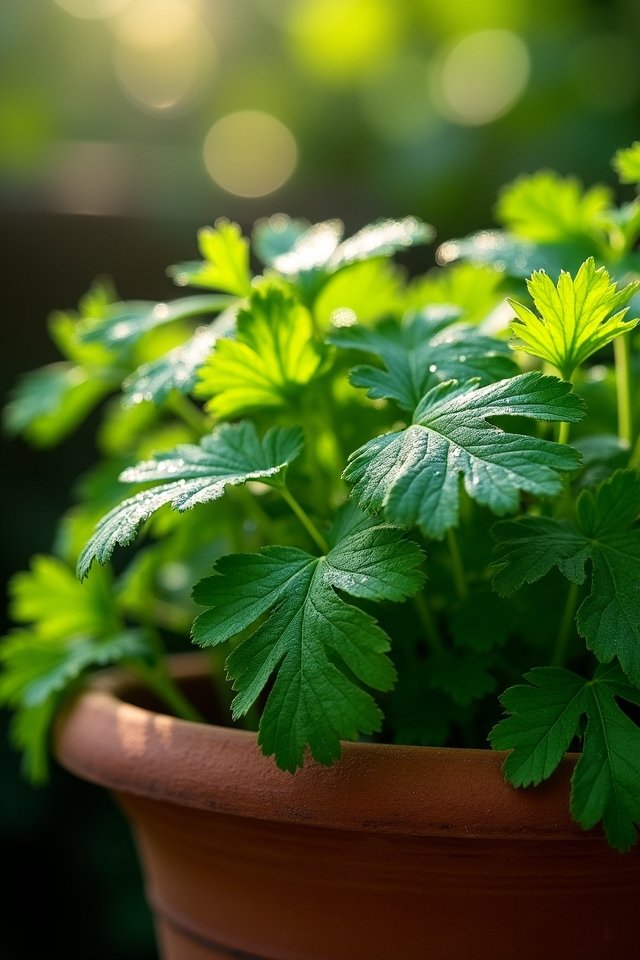
Cilantro, often called coriander, is like the spunky sidekick in your culinary adventures! This vibrant herb thrives in shady spots, offering fresh flavors without demanding too much sunlight. With ideal cilantro growth in well-drained soil, you can effortlessly scoop up a handful of this herb for your next recipe. Imagine zesty salsa bursting with tomatoes, onion, and those bright green cilantro leaves! Or picture a gorgeous cilantro pesto that dances on your taste buds. It’s aromatic magic in every bite! Plus, cilantro grows quickly, letting you enjoy its zesty goodness in just a few weeks. So, why wait? Grab a container, plant some cilantro, and elevate your meals to new heights—your taste buds will thank you!
Thyme
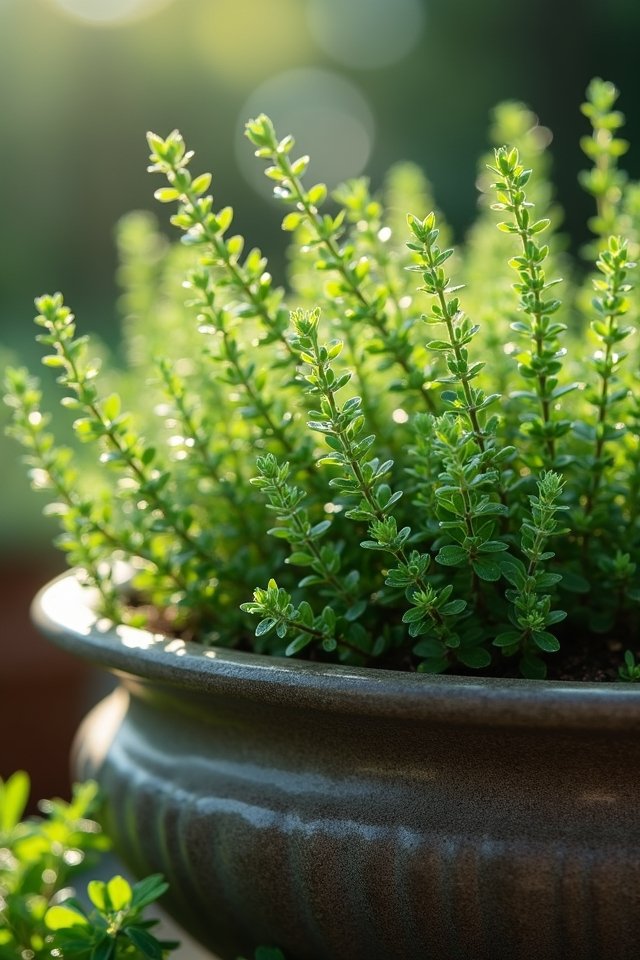
Though you might think of thyme as just a humble herb, it’s actually the secret superstar of any shaded container garden! With several thyme varieties like creeping, lemon, and German, you can brighten up your space in no time. Imagine snipping off fresh, aromatic sprigs while whipping up a delicious dish—who wouldn’t want that? Thyme’s culinary uses are endless, enhancing everything from roasted veggies to zesty marinades. Plus, its delicate flowers look stunning in bloom, attracting friendly pollinators! So, don’t underestimate this little powerhouse. Give your shady containers a dash of thyme, and watch your garden flourish! After all, life’s too short not to spice things up, right? Your taste buds will surely thank you!
Frequently Asked Questions
What Are the Best Pots for Shady Container Gardens?
Choosing the right pots is essential for your shady container garden! Consider lightweight materials like resin or fiberglass; they’re durable and easy to move. Go for containers at least 12 inches deep to guarantee your plants have room to thrive. A colorful mosaic pot can brighten up a dull corner! And hey, don’t forget drainage! Think of your plants like sunbathers on a chill beach day—they need comfy beds, not puddles!
How Much Water Do Herbs Need in Shaded Areas?
Herb watering in shady conditions isn’t as tricky as you might think! These delightful plants tend to need less water since they escape the harsh sun’s grip. Aim for about an inch of moisture each week, checking the soil for that sweet spot between dry and soggy. Remember, just like you don’t want a soggy sandwich, your herbs don’t want to swim! Keep them happy, and they’ll reward you with delicious flavor!
Can I Grow Herbs Indoors Without Sunlight?
You can absolutely grow herbs indoors without sunlight! Think of it as a cozy little herb party under artificial lighting. Just grab some full-spectrum bulbs—they mimic sunshine beautifully! Your basil and mint will thrive under their warm glow, like a summer day in February! Keep the lights on for about 12-16 hours a day, and don’t forget to rotate your pots for even love. Who knew indoor herb growth could be so bright and fun?
What Soil Type Is Best for Container Herb Gardens?
What’s the best soil type for your container herb garden? You’ll want a well-draining mix, like a blend of potting soil, compost, and perlite! This magical trio provides excellent soil composition and meets drainage requirements. Imagine your herbs thriving, roots breathing freely in rich, airy soil! Even basil and mint love this combination. So, grab your mix and get those pots ready—your herbs will be practically dancing with joy! Ready to grow?
How Do I Prevent Pests in Shady Herb Containers?
Preventing pests in your herb containers is like orchestrating a garden symphony! You can use natural pest repellents like neem oil or garlic spray to keep those critters at bay. Plus, try companion planting—basil near your tomatoes or mint with your beans can confuse pests. Imagine creating a bustling community of plants, working together like best friends! Keep the harmony alive, and your herbs will thrive beautifully, pest-free! How cool is that?
